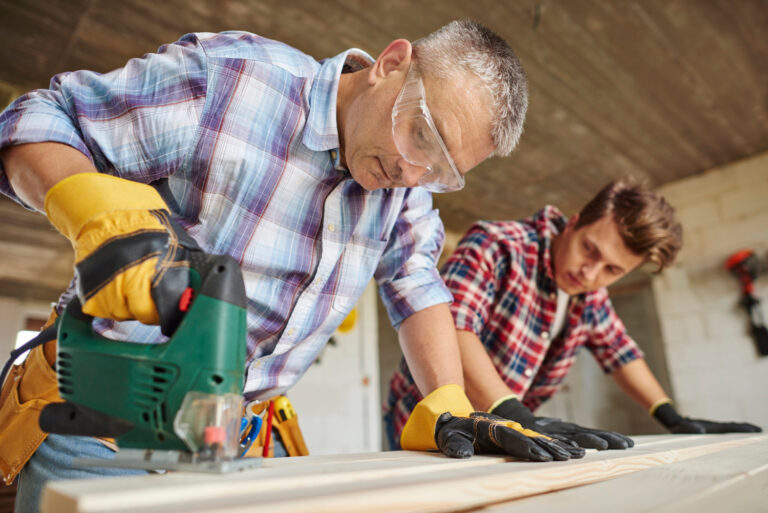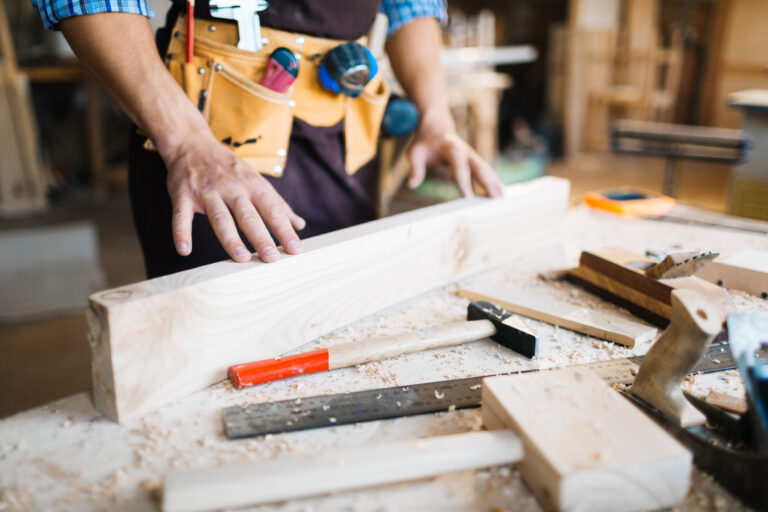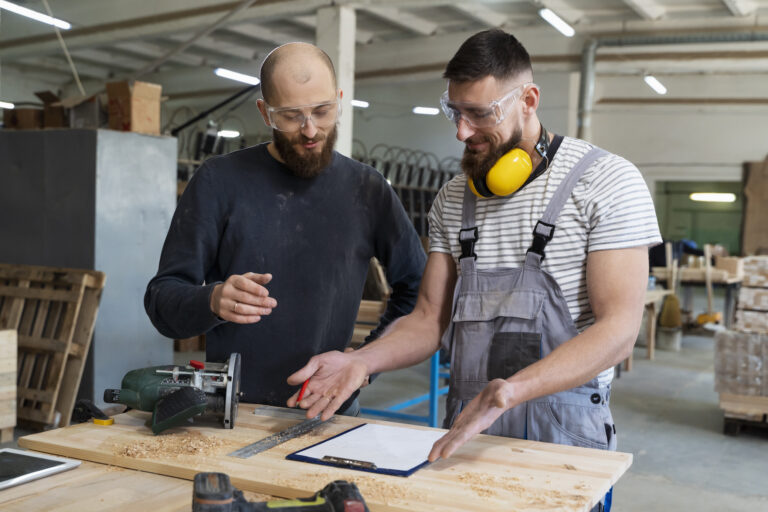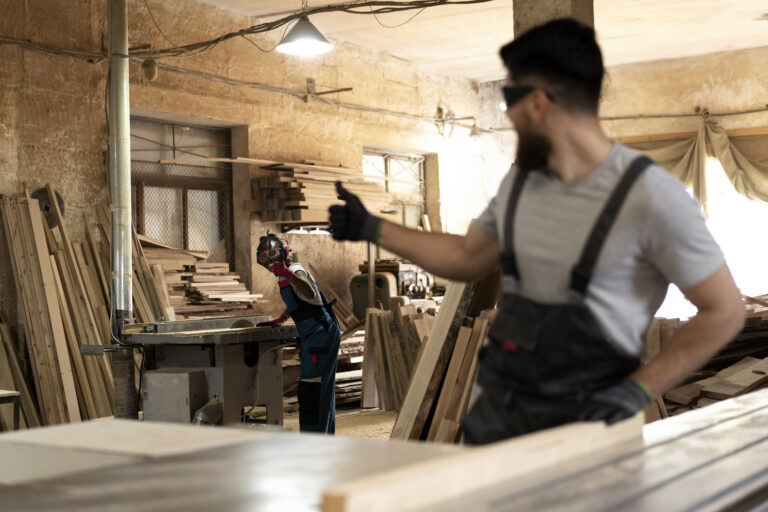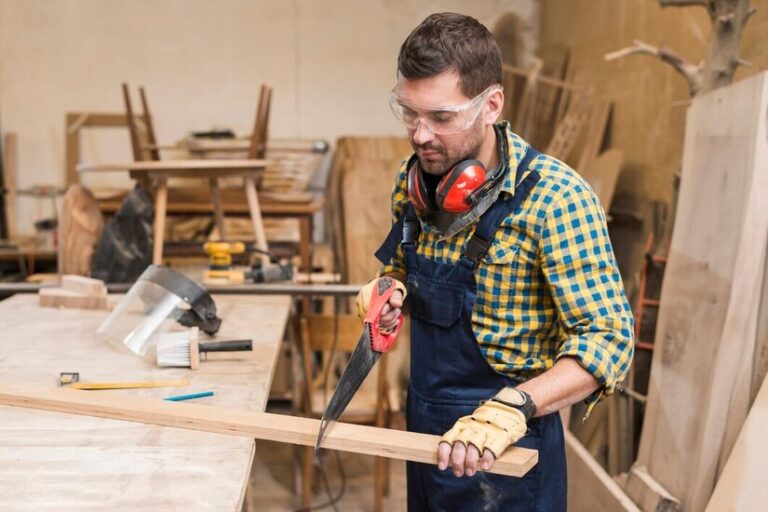Carpentry has been around for centuries. It’s the foundation of how we build homes, offices, bridges, ships, and even furniture.
Whether it’s the skeleton of a building or the final decorative touches, carpenters are behind the scenes, cutting, shaping, and assembling wood into functional and beautiful structures.
Carpentry isn’t just about tools and materials, it’s about safety, craftsmanship, and responsibility on site.
In this article, we’ll look at the most common types of carpentry and the essential safety practices every professional or aspiring carpenter should follow.
The Role Of Carpentry In The Construction World
Carpentry is more than just hammering nails. It’s a skilled trade that includes everything from frame building and structural installation to cabinetry and decorative woodwork.
Depending on the project, a carpenter might work on rooftops, interior walls, floors, or windows and doors.
With safer, more efficient buildings on the rise, specialized carpenters are now part of every build team.
Whether it’s rough carpenters handling the structural framework or trim carpenters doing the finish work, each plays a key role in the result.
Breaking Down The Types Of Carpentry
Different construction projects require different types of carpentry. Let’s take a look at the main specialities in the trade and what makes each one unique.
Rough Carpentry
Rough carpenters deal with the basic structure of buildings. They handle heavy framing, roof construction, and floor support. Most of their work is done before drywall or finishing begins.
You’ll often see rough carpenters using big tools and equipment to put together the bones of a building.
This type of work is physically demanding and usually done at height or in open site conditions. Safety measures like harnesses, helmets, and stable scaffolding are a must. Falling objects and unstable frames are common hazards on these jobs.
Finish Carpentry
Once the structure is in place, finish carpenters come in. These specialists focus on the details, trimming out doors, windows, crown molding, baseboards, and built-in furniture. This work requires precision and a good eye for detail.
Since most of this carpentry is done in enclosed, finished spaces, it’s important to use safety protocols for fine dust, sharp tools, and noise exposure. Eye protection and ear protection are non-negotiable here.
Cabinetmaking And Joinery
Cabinetmakers work in construction and custom furniture design. They make cabinets, shelving, and other built-ins. Their focus is on fine woodworking, precision, and artistic skill.
These guys spend a lot of time indoors using table saws, sanders, and chemical adhesives. Fire hazards can come from flammable finishes and fine wood dust. Keep the work area clean and well ventilated to minimize the risks.
Formwork Carpentry
Formwork carpenters build the temporary molds into which concrete is poured. These molds are critical for projects like bridges, tunnels, and building foundations.
Because this type of carpentry involves heavy lifting and working with wet concrete, workers need to identify potential hazards like collapse or spills. Wearing proper personal protective equipment (PPE) and following safe work practices is key.
Ship And Marine Carpentry
Marine carpenters work on ships, boats, and docks. They need to know water-resistant wood and building techniques that will hold up in humid environments.
Slippery surfaces, confined spaces, and power tool use are major safety concerns. PPE and clear safety protocols will prevent accidents on jobs near water.
Safety At The Heart Of Every Job
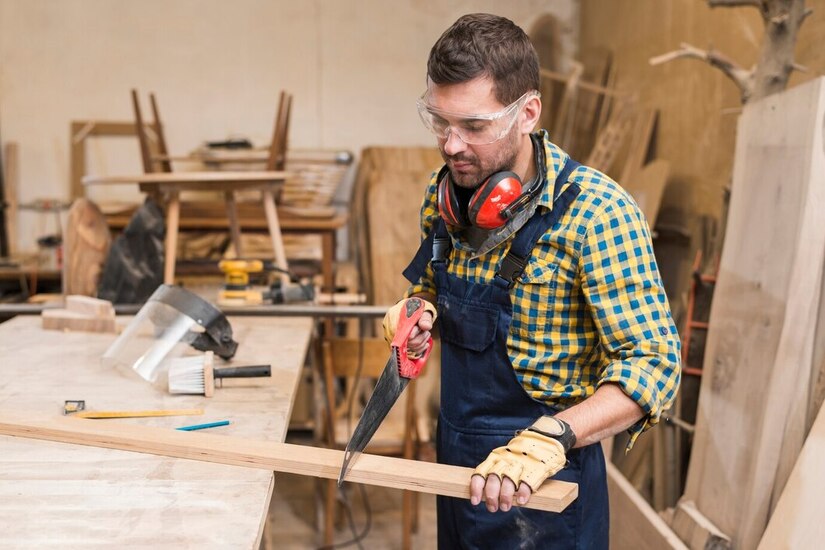
No matter what type of carpentry work you’re doing, one thing remains the same: safety. Construction sites are dangerous, and carpenters are surrounded by tools and equipment that can become hazardous if not used properly.
Using Tools Safely
Sharp blades, moving parts, and heavy-duty power tools are part of daily life for carpenters. Knowing how to use them correctly will reduce injuries. Regular maintenance, storage, and never skipping the instructions are all part of safe tool use.
PPE: Your Everyday Armor
Wearing personal protective equipment (PPE) isn’t just a rule, it’s a habit. Hard hats, gloves, safety glasses, and steel-toe boots will prevent injuries from falling objects or splinters. For noisy tools like nail guns or table saws, ear protection is just as important.
Airborne Hazards And Ventilation
Woodworking generates a lot of dust. It might not seem dangerous at first, but fine dust in the air can trigger respiratory issues or even explosions in rare cases. Good airflow and dust collection systems will reduce the risks, along with dust masks or respirators.
Working At Heights And Lifting Heavy Loads
Whether it’s roof construction or installing framing on upper floors, working at heights is part of carpentry. Safety harnesses, secured ladders, and guardrails are essential. Proper lifting techniques will prevent back injuries when moving heavy tools and materials.
Training, Certification, And Smarter Safety
Carpentry isn’t just about learning to use a saw. Most carpenters start as apprentices, learning from experienced tradespeople and attending safety courses. Certifications like OSHA (Occupational Safety and Health Administration) or CSCS (Construction Skills Certification Scheme) prove you’ve been trained in safety procedures.
Unions and trade associations also offer ongoing training to keep carpenters up to date with industry standards. These safety practices aren’t just helpful, they’re necessary for safe and efficient job sites.
If you’re just starting and want to know what a carpenter does in more detail, check out this what is a Carpenter guide to get a deeper look at the role and responsibilities.
Final Thoughts
Carpentry is more than just construction, it’s a craft that blends strength, precision, and safety. Whether you’re building the frame of a house, installing windows and trim, or designing custom cabinetry, the work requires skill and respect for safety.
By following solid safety practices, using PPE, and staying aware of your environment, you can build confidently and reduce the risks that come with the job.
For anyone considering this path, knowing the different types of carpentry and how to protect yourself while working makes all the difference.


